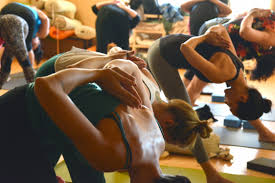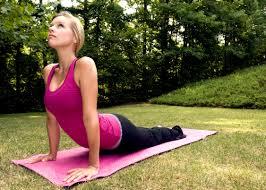If there's one sector of the health and fitness market that's experiencing explosive growth, it's yoga.
This activity has clearly struck a chord with American adults, serving as a vehicle towards achieving better health, relaxation and general well-being. In 2016, a reported 37 million people practiced yoga (10 million of them, men) to some degree, a significant increase from 20 million in 2012. These participation levels include attendance in both "hot" yoga, where the studio's heat is raised significantly, classes held at room temperature and individual engagement at home.
It's with this surge of attention that prompted researchers to study whether one class offered added health benefits over the other for healthy, middle-aged adults. This undertaking, they say, was the first study of its kind ever conducted.
Since heated environments, like saunas, have shown to be beneficial to vascular health, these researchers from the University of Texas at Austin and Texas State University expected to find that hot, or Bikram yoga, conducted at 40oC or 104oF, would be the healthier of the two options.
"Our working hypothesis was that endothelium-dependent vasodilation," or widening of blood vessels, facilitating better blood flow, "would be improved with both yoga practices with a greater increase in yoga practiced in the heated condition," the study authors wrote in their paper, published yesterday in the journal Experimental Physiology.
However, from their small study of 52 adults aged 40-60, they were surprised to learn that neither setting was more beneficial than the other.
 "The heated practice environment did not seem to play a role in eliciting improvements in vascular health with Bikram yoga," said Stacy Hunter, from the Department of Kinesiology and Health Education at UT, Austin, the paper's corresponding author. "This is the first publication to date to show a beneficial effect of the practice in the absence of the heat."
"The heated practice environment did not seem to play a role in eliciting improvements in vascular health with Bikram yoga," said Stacy Hunter, from the Department of Kinesiology and Health Education at UT, Austin, the paper's corresponding author. "This is the first publication to date to show a beneficial effect of the practice in the absence of the heat."
The participants of the study, which began with 80 before being reduced for various reasons, were randomly assigned to one of three groups: 19 in heated, 14 in room-temperature, or "thermoneutral," and 19 in a control "to account for the effect of time on our primary results," said the authors in a statement. "The intervention lasted for 12 weeks and participants were asked to attend 3 Bikram yoga classes per week," each lasting 90 minutes. All were screened for 17 potentially disqualifying conditions, such as "known coronary artery disease"; "infection within the previous 4 weeks"; and "heat intolerance," and medical measurements were performed to serve as a baseline.
However, in the end when evaluations were performed, both classes proved equally beneficial.
"We conclude that a 12-week, thermoneutral Bikram yoga intervention increased endothelium-dependent vasodilation in previously sedentary, middle-aged adults," the study's authors wrote in their conclusion. "The addition of the heated environment did not produce additional beneficial adaptations as the hot yoga intervention only tended to improve this measure. Changes in body composition were observed with the heated practice. These results lend further insight into the health benefits of Bikram yoga that have previously been purported but had not been fully explored."
One limitation of the study was the small sample size. But given that this was the first study of its kind, the results obtained do provide some value in that they deliver a starting point for future inquiry.




